Football is a sport known for its brilliant goals, creative playmakers, and masterful strikers. However, the art of defense is just as important. Many great teams throughout history have built their success on a strong defense, stopping their opponents’ attacks and controlling the game without the ball. One defensive strategy that stands out is the Catenaccio system.
Originally developed by Austrian coach Karl Rappan with the Swiss national team and later, this defensive style was perfected by Helenio Herrera at Inter Milan, Catenaccio became one of the most effective football tactics in football history.
Catenaccio employed a highly defensive structure, utilizing four man-marking defenders and a sweeper, known as a libero, positioned in front of the goalkeeper. This system prioritized defensive solidity, frustrating opponents and leading to significant success, including European Cups and domestic titles. However, Catenaccio’s defensive focus raised questions about whether football should prioritize spectacle over defensive pragmatism.
So, come with me, and I’ll show you the origins of Catenaccio in contemporary football, the tactics behind the system, key players and managers, and extraordinary matches. We’ll also explore how modern football has evolved beyond defensive strategies – but still have elements of this system. Ready to dive into the world of defensive tactics?
Table of Contents
- What is Catenaccio? A Defensive Art That Shaped Football
- Origins of Catenaccio
- Helenio Herrera and Golden Age in Italian Football
- Tactical Structure of Catennacio
- Iconic Matches with Catenaccio
- Key Players in Catenaccio System
- Has Catenaccio a Place in Modern Football?
- Create your Football Style with FootballTeam
Origins of Catenaccio

The Catenaccio roots began in the early 1930s, when Austrian coach Karl Rappan created the Verrou system in his coaching career while managing the Swiss national team. “Verrou”, meaning “Door Bolt” in French, was a highly defensive structure designed to give smaller teams a chance against stronger opponents.
Rappan’s strategy introduced a sweeper or libero, an additional player who, freed from man-marking duties, could provide defensive support wherever needed. This innovation also redefined the role of full-backs, transforming them into de facto central defenders. The overall focus was on neutralizing the opponent’s attack by teaching defenders to limit the space available to the opposing team.
The Catenaccio system developed in the 1950s, when Italian teams modified the concepts of Rappan into a more structured and defensive strategy with a virtually non-existent attacking role.
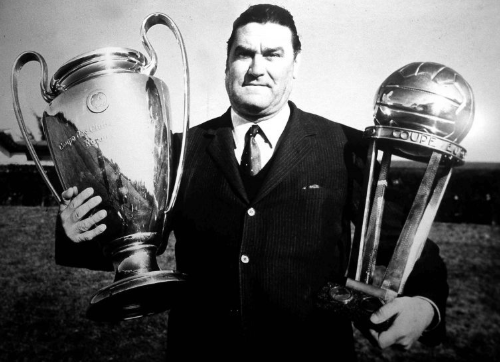
Italian teams highly valued defensive solidity, prioritizing a well-organized team and strong backline, with less emphasis on attacking. This defensive style, known as Catenaccio, was further developed by managers like Nereo Rocco, who introduced the sweeper role and strengthened the defense to achieve success with teams like Triestina and AC Milan, leading to the development of great Italian defenders in the future.
The Italian national team and Italian clubs quickly recognized and found success with this defensive strategy. As football became more tactical, Catenaccio’s influence grew. Helenio Herrera, the great Argentine coach, capitalized on this tactical system with Inter Milan in the 1960s.
Becoming highly effective defensively, with great transitions and system, picking up loose balls in their own half to initiate the attack, Catenaccio began its journey and shaped football for years to come.
Helenio Herrera and Golden Age in Italian Football
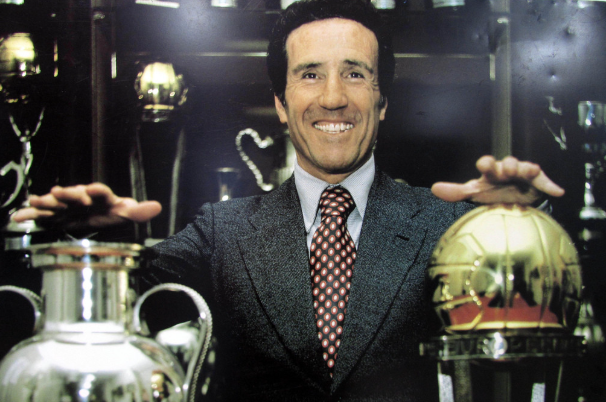
The Catenaccio system was pioneered by Nereo Rocco, former Italian manager of AC Milan. It was, however, Helenio Herrera who is most closely associated with Catenaccio, having transformed it into a dominant football tactic with Inter Milan in the 1960s.
The Argentinian manager built his teams with an organized defense, man-marking defenders, two great full backs and the most important part, the sweeper, who played behind the goalkeeper and initiated the plays, in addition to covering the defenders.
However, Herrera’s Inter Milan wasn’t just about parking the bus in his own half – he added elements for attack in Catenaccio. His team played with counterattacks, using long passes for the wingers and exploring spaces left by opponents who found problems to break through his defensive solidity.
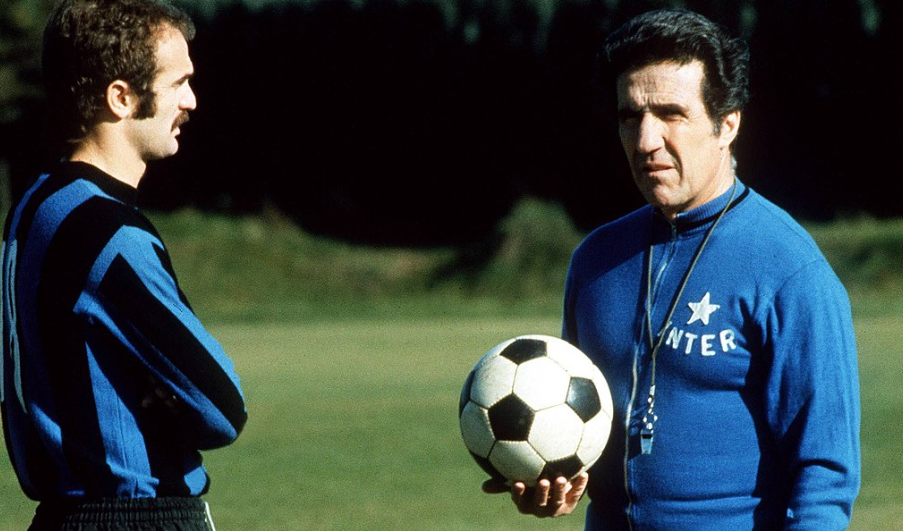
Critics at the time accused his tactics of having little attacking intent and playing poor football. But Herrera always had a plan in mind. He preferred efficiency to possession in the game, ensuring that Inter Milan would score a goal and not suffer risks.
Helenio Herrera’s Inter Milan secured three Serie A titles and, notably, two consecutive European Cups (now UEFA Champions League) in 1963/64 and 1964/65. Their initial victory was a 3-1 triumph over Real Madrid CF, followed by a 1-0 win against Benfica.
Herrera’s system, while groundbreaking and successful, was soon challenged by Rinus Michels’ Total Football, later perfected by Johan Cruyff.
Despite criticism, Herrera’s defensive Catenaccio style of play significantly impacted football history.
Tactical Structure of Catennacio
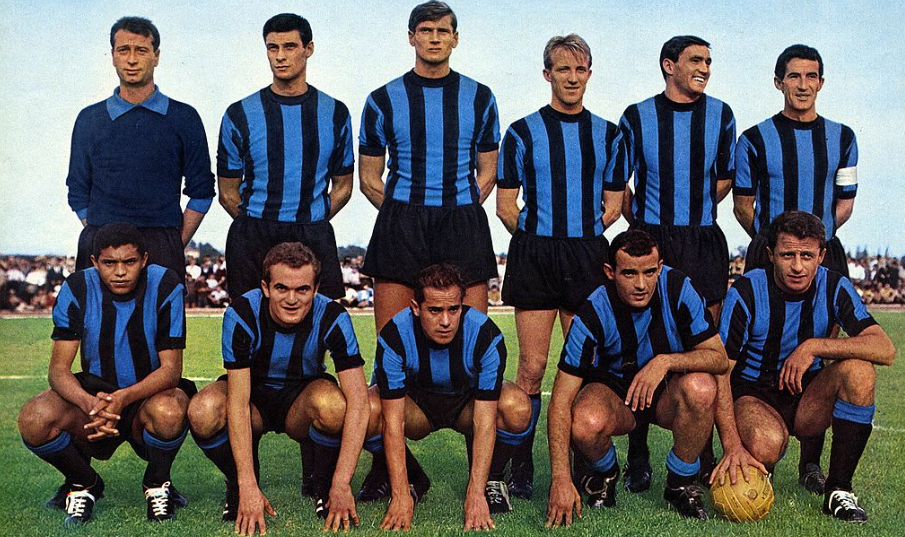
The Catenaccio had one principle, a defensive setup, built around the sweeper, or libero, role. Unlike traditional defenses, which use defending players only for this reason, teams had more freedom and security with the sweeper. The sweeper covered his teammates, becoming an extra defender.
Franco Baresi, former Italian defender of AC Milan, and Franz Beckenbauer, perhaps the most famous sweeper in history, executed this role with excellence. These defenders, when helping to defend their own teams, allowed their strikers and forwards to go on the attack and try to score goals.
The Catenaccio formation incorporated several defensive strategies to stifle opposing offenses. In addition to the libero, four defenders were positioned in the defensive field to chase and deter opposing forwards. Furthermore, two wing halves were employed to control and neutralize the opposing wingers, thereby limiting their attacking opportunities.
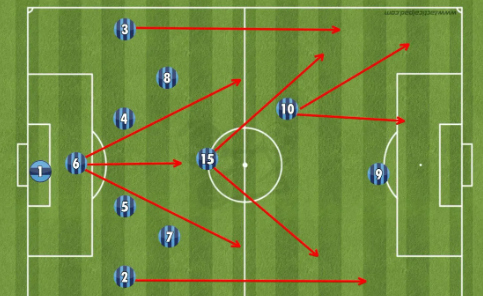
Catenaccio was a tactical system in football that prioritized defense. This setup created a defensive block, with five defenders compressing space in front of the goal, making it difficult for opposing forwards and wingers to score. This often forced opponents to resort to long passes or long-distance kicks, which were less likely to result in goals.
The Catenaccio system aimed to nullify the opposing team’s attacking efforts. Despite its reputation as a purely defensive strategy, Catenaccio also incorporated quick counter-attacks, surprising opponents with fast transitions from defense to attack using long, precise passes to bypass the midfield and find attacking players.
This approach, while sometimes perceived as boring, was effective in games where the opponent had significant ball possession but struggled to penetrate the defensive line. While compared to modern strategies like “Parking the Bus,” which focuses on a large number of defenders and limited space for opponents, Catenaccio still maintained an attacking philosophy.
Some elements of Catenaccio are still present in today’s game, particularly in teams that prioritize defensive solidity and well-structured counter-attacks, demonstrating its enduring influence on modern football.
Iconic Matches with Catenaccio
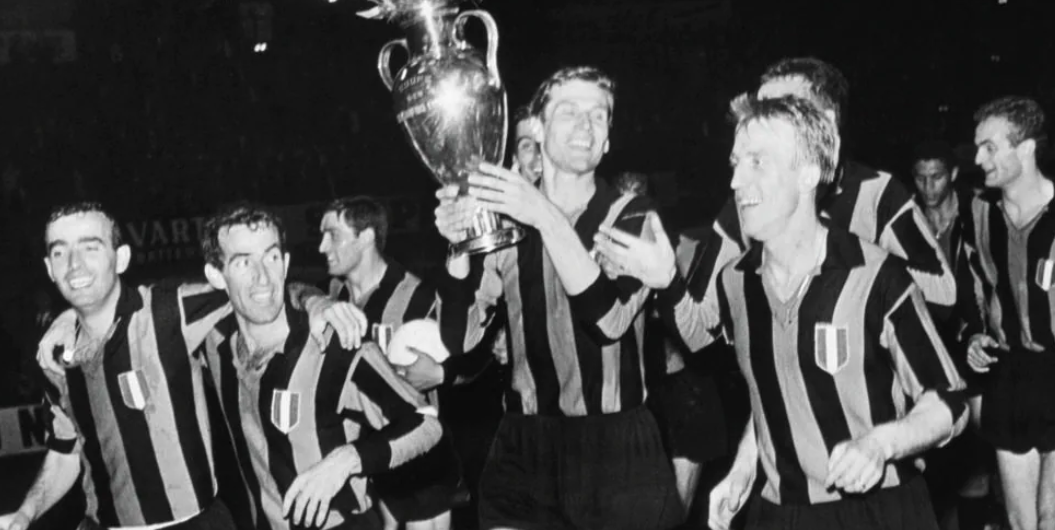
Catenaccio is one of the few tactical systems that has left a lasting impact on football history. Its effectiveness, and eventual decline, can be seen in the games played by Inter Milan during that era, particularly between 1963 and 1965, when the team won two consecutive European Cups, marking the peak of Catenaccio’s success.
In the 1963/64 season, Inter Milan reached the European Cup final and faced one of the biggest teams in history, Real Madrid CF. The Spanish team was filled with great players, like Ferenc Puskás and Alfredo Di Stéfano.
But Inter Milan started the game and was prepared to make history. In Vienna, the capital of Austria, at the Praterstadion with over 70,000 fans, the Italian team won the game by 3-1 and lifted the trophy that night.
The goals were scored by Sandro Mazzola, who scored twice, and Aurelio Milani. Real Madrid scored the solitary goal with Rafael Hernández, known as Felo.
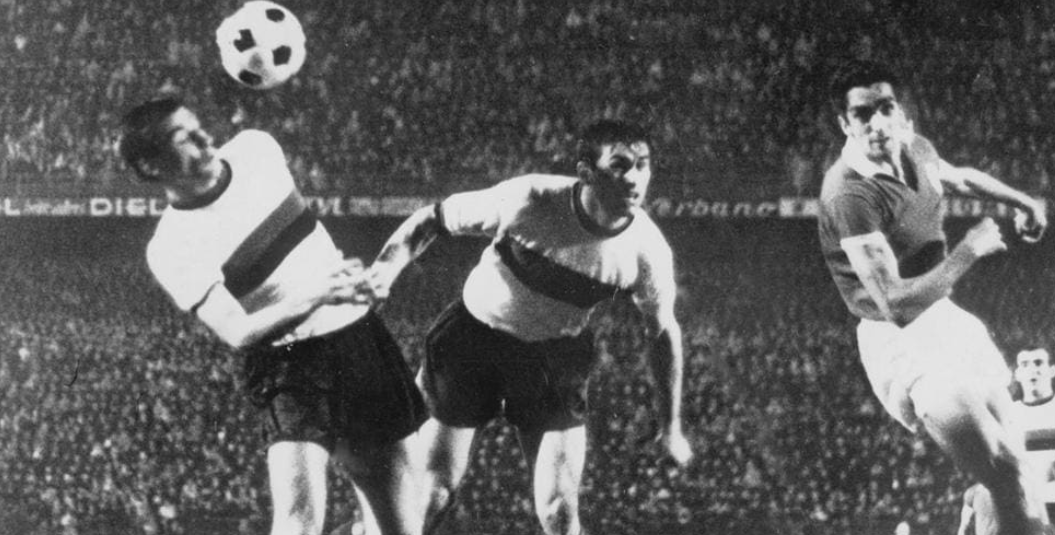
Catenaccio proved to be an amazing system in the next season, 1964/65. Inter Milan, once again, reached the European Cup final. But this time, they faced Benfica, a Portuguese team.
At the San Siro stadium in Milan, Italy, Inter Milan defeated Benfica 1-0 in the European Cup final. Jair, a former Brazilian player, scored the match’s only goal, securing Inter Milan’s second European Cup trophy. Despite Benfica having one of the world’s best players, Eusébio, in their squad at the time, they could not overcome Inter Milan’s strong defense.
Weakness of Catenaccio
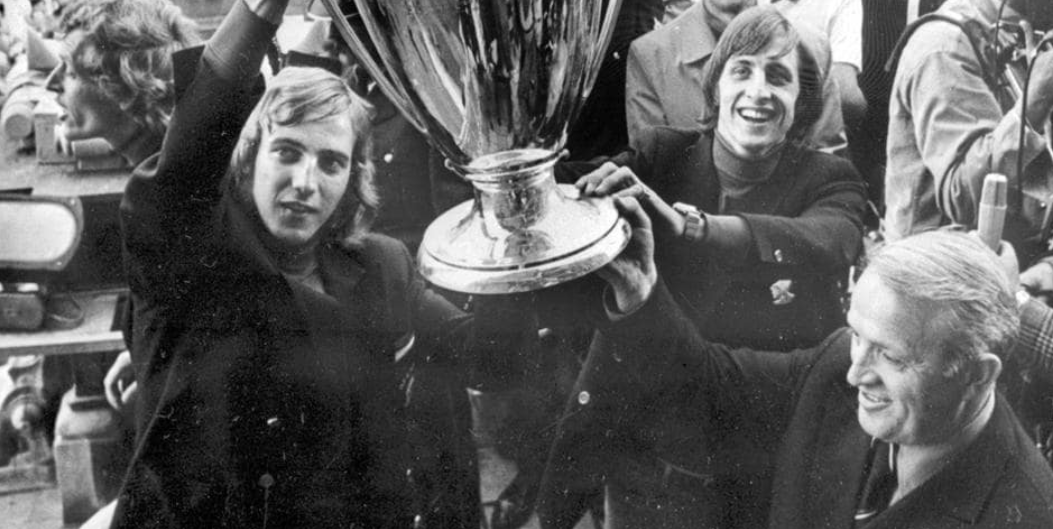
The 1971/72 European Cup final between Inter Milan and Ajax showcased the shortcomings of Catenaccio. Ajax, led by Rinus Michels, played Total Football, a then-revolutionary system that focused on constant movement, positional interchange, and high pressing.
The match took place in Rotterdam, Netherlands’ second-largest city, at De Kuip Stadium, where over 60,000 fans watched Ajax defeat Inter Milan 2-0. Johan Cruyff, Ajax’s star player and the reigning Ballon d’Or winner, scored both goals.
This game marked the beginning of Catenaccio’s decline, as teams with stronger attacks and positional rotations found ways to dismantle its defensive structure. While Catenaccio remained influential, it was evident that football was evolving, and new strategies were emerging to dominate the sport.
Key Players in Catenaccio System
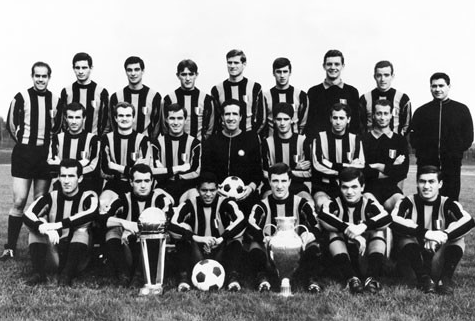
Catenaccio’s success was due to both brilliant managers and exceptional defenders like Armando Picchi, who was instrumental in Inter Milan’s golden age.
Armando Picchi
Picchi, a former Italian defender, was the libero in Herrera’s system and the defensive leader. His extraordinary ability to read the game was crucial to Catenaccio’s success. Playing as the sweeper in the last line, he cleaned up loose balls and teammates’ mistakes. During his seven years with Inter Milan (1960-1967), Picchi played over 200 games, scored one goal, and won three Serie A titles, two European Cups, and two Intercontinental Cups.
Giacinto Facchetti
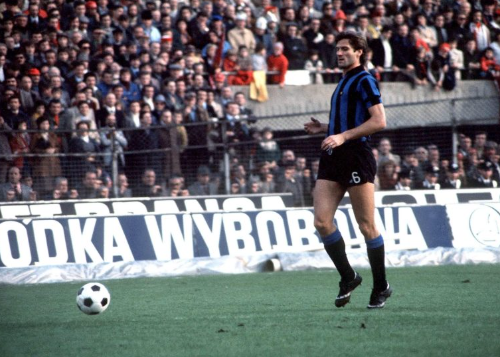
Another important player for Catenaccio was Giacinto Facchetti, who played left-back in the defense of Inter Milan. Traditionally, left-backs were defensive players, but Facchetti revolutionized this role. He was more offensive, but he didn’t leave aside his defensive responsibilities.
The former Italian player was known for his runs down the left wing, providing offensive support for the team while maintaining the discipline in the defense needed by the system. Facchetti played his entire career with Inter Milan, making 476 appearances and scoring 59 goals—good stats for a left-back. He played for Inter Milan between 1960 and 1978.
Franco Baresi
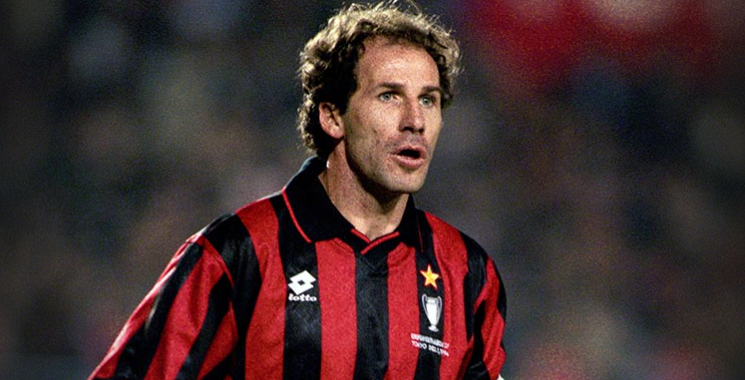
Franco Baresi, like Giacinto Facchetti, dedicated his entire career to a single team, AC Milan. As Catenaccio developed, Baresi emerged as a pivotal figure in Italian defensive football throughout the 1980s and 1990s, widely regarded as one of the most successful defenders in football history. Baresi’s impeccable positioning and exceptional game-reading ability enabled AC Milan to establish an impenetrable defense alongside Paolo Maldini, another legend of Italian football.
Baresi’s remarkable career with AC Milan included 532 appearances and 16 goals. His reputation as potentially the greatest defender in world football makes me regret not having witnessed him play. Who do you consider the greatest defender you have ever seen?
Decline of Catenaccio in Football Tactics
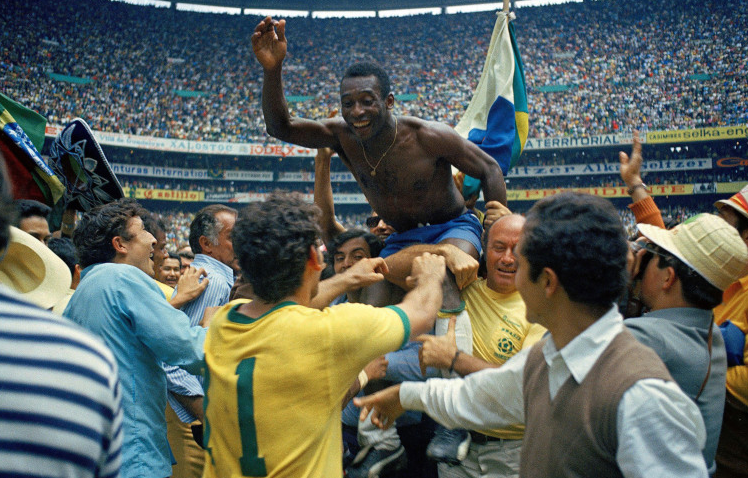
Over time, football evolved, and Catenaccio’s rigid principles started to show their weaknesses against the new systems of attacking teams. Notably, Ajax’s Total Football, with its offensive tactics, and the Brazil national team, with its attacking style, were able to exploit Catenaccio’s vulnerabilities. These new attacking tactics made Catenaccio less effective. The 1970 FIFA World Cup, won by Brazil under Mário Zagallo, was a nightmare for traditional defensive setups.
With a style similar to Total Football, Brazil’s national team disrupted Catenaccio’s effectiveness. Teams relying on Catenaccio realized it wouldn’t be enough to defeat more offensive teams.
Catenaccio’s decline began in the 1990s due to FIFA rule changes, like the back-pass rule, which impacted heavily used Catenaccio tactics. These changes, along with the rising popularity of high pressing and ball possession, forced teams to adapt and use new counter-attack methods, leaving Catenaccio vulnerable in the modern game.
Has Catenaccio a Place in Modern Football?
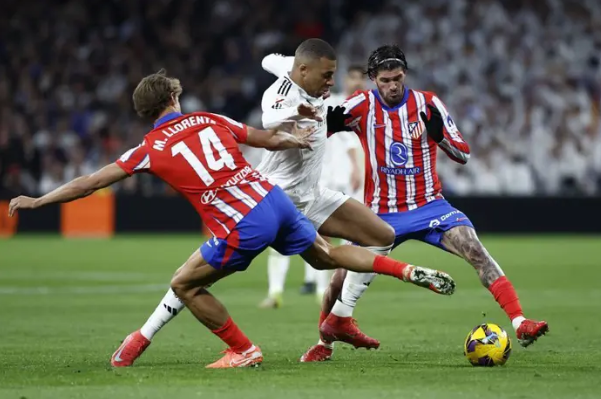
Catenaccio remains one of the most influential tactics in football history, even if people don’t like it and think it’s a sleepy style. Under Helenio Herrera, the system was perfected and had great achievements. Even if it isn’t the most used style of football today, some teams like Atletico Madrid continue to use their defensive strategies against the biggest teams in the world.
With football evolving, the question remains whether these tactics are the best to beat opponents. With more offensive tactics emerging, some world coaches, such as Diego Simeone and José Mourinho, manage to deal well with their squads and achieve great achievements.
So, now it’s to you: Do you think modern football has a place for a system like Catenaccio? Can a defensive style still be successful in an era dominated by high-pressing and offensive play? Let me know what you think! I believe that with good players and strategies, Catenaccio can still be a powerful weapon in the right hands!
Create your Football Style with FootballTeam

We showed you beautiful moments of Catenaccio in football’s history, and now it’s time for you to dominate the football pitch in the virtual world and write your beautiful history. FootballTeam is the next-level experience you’ve ever wanted, taking your competitive spirit one step further against people from all over the world.
Join over 1 million registered players in a series of different competitions, each one with its own set of rules. Test your abilities as both a player and manager, allowing you to do everything you want and create the dream team to achieve everyone’s dream: becoming the #1 player in the world.
You can also invite your friends and enjoy this experience together to see who’s the best among you. The game allows you to connect with people from all over the world through a series of devices, whether desktop or mobile, right from your browser, dismissing the need for downloads.
Customize your character and prepare to dominate the sports scene in this incredible experience. Visit the main page and register now to start enjoying it for free!